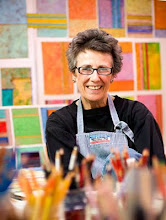I woke up last night thinking of a talk I’d had earlier with a new friend. He spoke of growing up in a family deeply entrenched in right wing values and becoming himself a “flaming liberal” at a relatively young age. I can attest to his self-description. How does that happen, I wonder? I have known so many who inherit the worlds of their parents along with most of the belief system. How does it happen that some of us are able to stand back, see the big picture, and think for ourselves?
I thought it was the domain of the artist to filter the facts through him/herself, sort them out, and then present them either in words or pictures for the eyes and ears of his audience. Would we really know what poverty looks like without photos like those of Dorothea Lange? I have lived far away from the horrors of war but the photos I saw of the death camps of WW ll changed my life. Picasso’s Guernica, and Goya’s Tres de Mayo are images that once seen, are hard to forget. The “Okies” of John Steinbeck’s “Grapes of Wrath” are equally unforgettable as are the images that formed in my mind as I read John Hersey’s Hiroshima. The pictures of poverty and war granted an education I might have otherwise escaped. The photos being published now of children with facial deformities, in need of surgery, are heart wrenching. A more complete view of the world is not only about hardship. Nor is it as we would like it to be. But we need to know it or, as I believe, we risk having incomplete lives.
For a long time I was close to a man who never outgrew the learning of his early years. There was a time when he was in his fifties, that he was distraught and feeling terrible guilt for doing something his grandmother would have taken a dim view of. Never mind that it was a situation in a culture and at a time that his forbears had not known.
My theory (feel free to stop reading here) is that if, as an adult, you think of completely revising your perception of the world, you have to blow up the foundations you built your life on. Not easy to do. It is a painful process that some people take on in psychotherapy. The book “Love's Executioner” by Irvin Yalom describes ten people at the end of their lives attempting major changes. Brave souls.
So back to my question. Some of us don’t take on the views that we are handed. We may need some time to sort it out but we can think without bias. For me, this has been tough going. I am still struggling to rid myself of prejudices inherited and the conclusions I reached before my experience had widened. I hope to have enough time on earth to really get to see the big picture.
The friend I mentioned earlier is not an artist; he is, in his own words, “Trained as a scientist with degrees in physics, math and engineering …”. I think the truth here is that he stirred the mind of the artist who had come to some conclusions that needed to be reviewed.
I know, I know. I said I’d be briefer. I tried.
The image above is another painting from the past, long gone. 48” x 36”, circa 1985, acrylic paint and pastel on etching paper. It is from before the time that I started keeping careful records so I don’t remember the title.














Bravo! To invent it's important our creativity be not skewed by inherited values that could harang our work. The good values are, well, good; listening to the handed down values and perceptions that could potentially warp our creative expression be aware of; you're right: that's the Big Picture.
ReplyDeleteAs a writer, I am constantly aware of the words I choose. I rewrite and always ask: are they really my own?
Thanks, Ms. Gold for another excellent blog.
And thank you, Terry, for another note of support.
ReplyDeleteJ.
The pendulum always swings back to the opposite side. I daresay none of us would want a world in which it simply kept moving in the same direction across the generations.
ReplyDeleteYup. Maybe it is that pendulum that causes us to make many of the same mistakes our ancestors made.
ReplyDeleteJ.